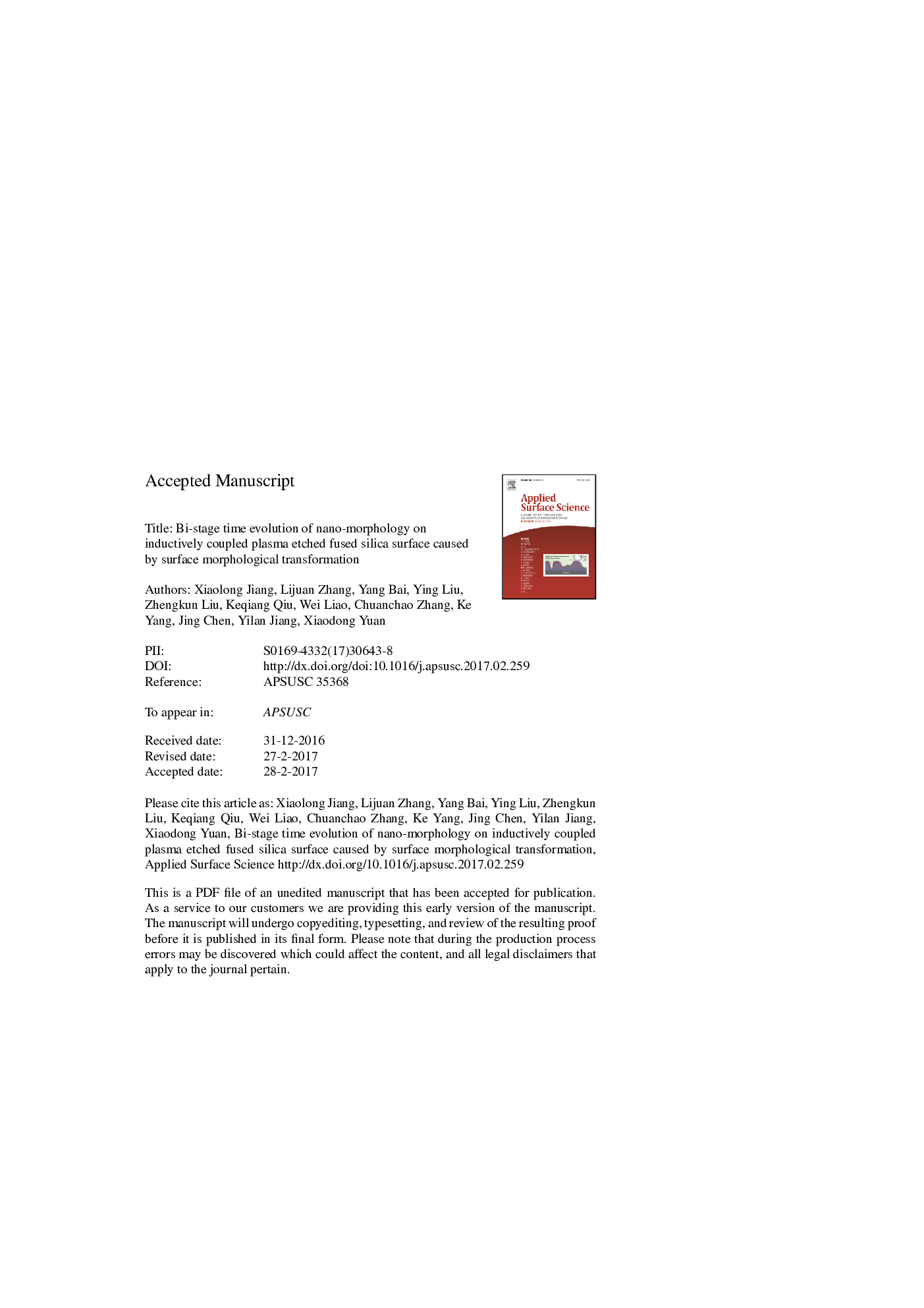| Article ID | Journal | Published Year | Pages | File Type |
|---|---|---|---|---|
| 5350702 | Applied Surface Science | 2017 | 15 Pages |
Abstract
In this work, we experimentally investigate the surface nano-roughness during the inductively coupled plasma etching of fused silica, and discover a novel bi-stage time evolution of surface nano-morphology. At the beginning, the rms roughness, correlation length and nano-mound dimensions increase linearly and rapidly with etching time. At the second stage, the roughening process slows down dramatically. The switch of evolution stage synchronizes with the morphological change from dual-scale roughness comprising long wavelength underlying surface and superimposed nano-mounds to one scale of nano-mounds. A theoretical model based on surface morphological change is proposed. The key idea is that at the beginning, etched surface is dual-scale, and both larger deposition rate of etch inhibitors and better plasma etching resistance at the surface peaks than surface valleys contribute to the roughness development. After surface morphology transforming into one-scale, the difference of plasma resistance between surface peaks and valleys vanishes, thus the roughening process slows down.
Related Topics
Physical Sciences and Engineering
Chemistry
Physical and Theoretical Chemistry
Authors
Xiaolong Jiang, Lijuan Zhang, Yang Bai, Ying Liu, Zhengkun Liu, Keqiang Qiu, Wei Liao, Chuanchao Zhang, Ke Yang, Jing Chen, Yilan Jiang, Xiaodong Yuan,
